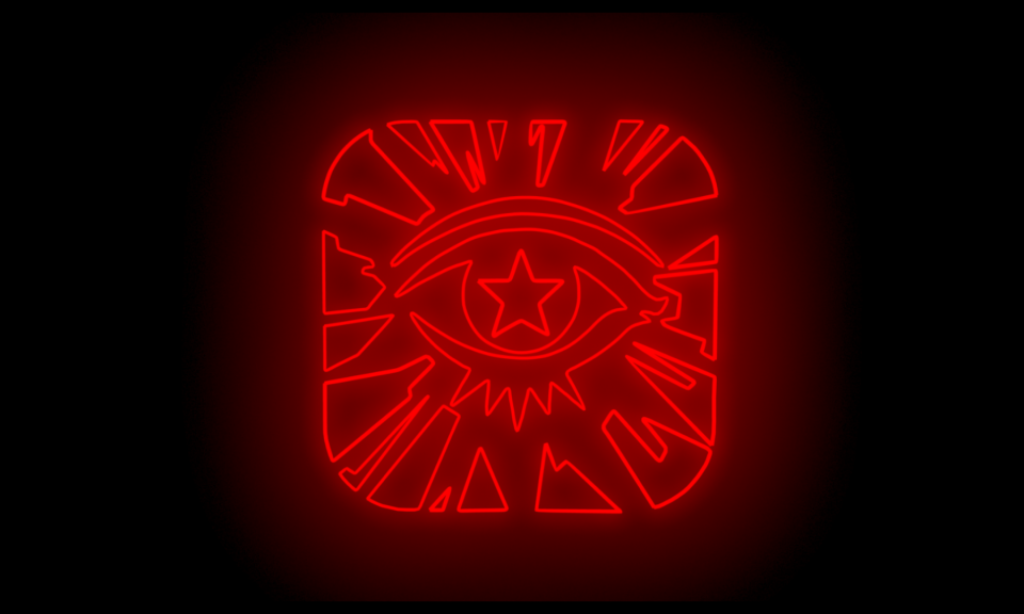So aesthetic storytelling is something I really enjoy, with a lot of the shows, games, and experience. I’m personally familiar with using some of the ideas shown in our first one or two initial classes. The first class focused more on the usage of shapes and props in storytelling., whilst the second was a deep dive on color theories.
Class 1 – Shapes and Props
To begin with shapes and props, we were given a task at the end of the class to analyze a VR experience of our choosing and its usage of shapes, as well as possible props. I chose this screenshot from a VR experience called ‘Into the Radius’ to analyze:

To begin, I analyzed the large spherical anomaly present in the game. From what I learned in the lecture, circles are predominatly used to represent things such as nature, surveillance, and endlessness. In the context of the experience, this fits the theory, with this spherical anomaly acting as one of the main catalyst for the game. Its always present simply as part of the environment, linking to the idea of it being endless whilst its circle shape possibly could also be used in an attempt to have the player come to consider it a part of nature.
Besides the anomaly, there are plenty of usages of other shapes in the environment, such as triangles used for the trees, possibly to symbolize their stability in the environment. Squares are used a lot in the more city-like areas of the view, linking to the idea of the square being a more ‘man-made’ shape.
Moving on to the usage of props in this scene, the primary prop is clearly the weapon the player character has equipped. This is clearly a practical prop to be used more than once, and the scope aimed at a humanoid target not only links to the spherical nature of the scope and its connotations with surveillance but also suits the background of the player character in the game, given the experience is based around entering a hostile zone and fighting off anomalies of different types whilst scavenging.
Given that I was able to analyze and identify ideas stated in our lecture in this experience, I believe I have a firm grasp on these aspects of aesthetic storytelling and how they can be implemented in VR.
Class 2 – Color Theory
This class was a deep dive into the usage of color in storytelling, which is one of my personal favorite concepts to use in any form of storytelling. We looked into a lot of different ways to use color, from different color schemes, tints, and the usage of black and white.
During the class, I quickly began to think of examples in gaming and other mediums where color usage was vital to storytelling. ‘Devil May Cry’ and ‘Team Fortress 2’ are two examples in gaming where contrast colors are used for storytelling, with the rival characters/factions of the games wearing opposite colors such as red and blue.

Besides gaming however, the American anime ‘RWBY’ (for which I am personally fond of) has its entire character outlines defined by the usage of color, with each individual in the story being represented by a certain color, which can sometimes highlight their personalities (eg. Ruby Rose – represented by red is very energetic and passionate, in line with the ideas shown in the lecture). This is also a direct example of associative color usage.
Moving onto the concept of color schemes, I have some personal history in regards to understanding them, having created a few fictional characters with their own color schemes using a website called coolors, even using it to develop the color scheme I used for my 3D model in my virtual trajectories classes. During class, we analyzed how different color schemes can create different moods in a scene, such as analogous schemes being more calming, and monochromatic schemes being more theatrical in feel.
One of the most striking examples of tints used in storytelling I have experienced is from a game called ‘Soma’. The example links heavily to the storytelling of the piece, with the entire game up until the ending having a dark blueish tint, being set at the bottom of the ocean with little light. In the end, however, the area you enter is vibrant and brightly lit with yellow tints, showing the difference between both worlds.
Finally, black and white usage was discussed, the examples of ‘Limbo’ and ‘The Graveyard’ being discussed – both games I have personally played. Besides the idea of using black and white to visualize importance in the environment through objects, it can also visualize importance in other ways. Certain games such as ‘Uncharted’, have the screen turn to black and white hues the more the player is damaged, signifying the imminent danger to the player. Beyond its practical uses, I also believe black and white hues helps the use of light stand out much more than normal color palettes, as it is the only thing that gives the environment its features. Limbo is a very good example of this, as without light, the game would simply be a black screen.
